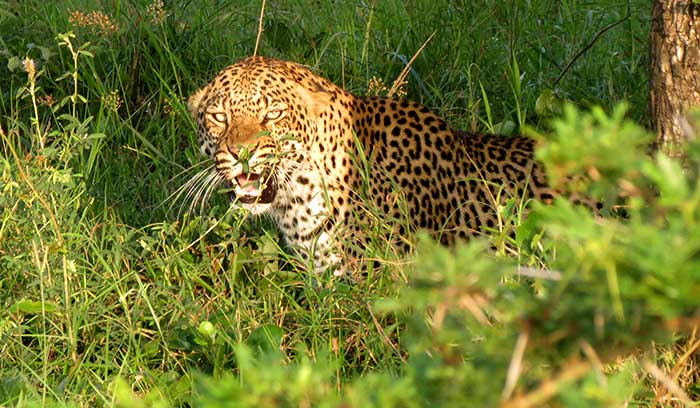African Leopard Facts & information

African Leopard facts and information on one of Africa’s Big 5. The leopard is a powerfully built cat and is the largest of the spotted cats.
Solitary and elusive, these magnificent creatures live a solitary life, coming together only to mate.
African Leopard Description
This large cat has rosette spots on body with solid black spots on legs, head, sides and hindquarters.
The leopard’s tail is about half of its total length with a white tip. It has round white tipped ears and the underparts are usually white to off white.
Characteristics of leopards are that they are silent, secretive animals. Whilst being excellent climbers they are also good swimmers.
Leopards have a wide habitat with a preference for forests and hilly areas. Whereas drinking water is not an essential requisite, cover is.
They mark territories with urine and droppings and they also exhibit clawing the bark of trees.
Generally a silent animal, the leopard has a characteristic call similar to that of a rough saw cutting wood.


Breeding
After a gestation period of about 100 days. litters of 2 to 3 cubs are born.
Birthing normally takes place in dense bush or amongst rocks. Families will stay together for up to 2 years before splitting up.
Feeding
Active mainly at night, the leopards diet is varied and includes insects, rodents, birds to medium and large antelope.
Given the chance, leopards will scavenge and any excess food is taken and stored in the tree “larder”.
An indication of the leopard’s strength is shown by its ability to carry carcasses weighing in excess of 50 kg up vertical tree trunks.
It’s hunting technique relies on stealth to stalk its prey before pouncing
